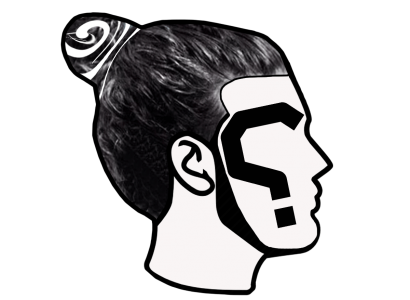Does it come from Corona beer? U.S soldiers in China? Is it part of a Chinese plot to cripple the global economy? Or patented by Bill Gates as part of an Illuminati plot to depopulate the world?
Why is it that people are now finding mention of a Coronavirus in a 2018 episode of My Secret Terrius, a Korean TV drama? (Which is now, as a result, the fifth most watched show on Netflix in the UK). Is it part of some sinister plot?
Why is there a chariot driver called ‘Coronavirus’ in the 2017 comic book Asterix and the Chariot Race? Was it a prediction of the future?
I’m afraid the reality is much less dramatic and, for those who are not fascinated by epidemiology, quite boring. The word ‘Coronavirus’ is far from new. Coronaviruses are a family of viruses that include SARS and MERS. They were named after their protein spikes, which look like spikes on a crown (‘crown’ comes from the Latin word ‘corona’, meaning ‘wreath’). There are four other (less deadly) members of the Coronavirus family (OC43, HKU1, NL63, and 229E) which have infected humans for over a century, causing a third of common colds.
Why do different people call it different names? Well, diseases are named by the World Health Organization (WHO), whilst viruses are named by the International Committee on Taxonomy of Viruses (ICTV). Covid-19 stands for COrona VIrus Disease (Covid) and, since it was first diagnosed in 2019, it’s called Covid-19. It refers to the disease caused by the virus (like HIV and AIDS – one is the virus, the other the resulting disease). The virus causing Covid-19 is Severe Acute Respiratory Syndrome CoronaVirus 2 (SARS-CoV-2). The basis of people’s confusion, and subsequently many ridiculous conspiracy theories, is simply the unfortunate decision taken by the media and several world governments to refer to the virus simply as ‘Coronavirus’.
What is it exactly? Far from being made up of barley malt, corn, hops and yeast, the SARS-CoV-2 virus’ genome is made up of about 30,000 base pairs (humans have more than 3 billion). Coronaviruses’ genomes are made of RNA (ribonucleic acid) rather than DNA. DNA and RNA are two of the four major macromolecules essential for all known forms of life. As I learned from this super-informative Genomics Education Programme page, Coronaviruses “hijack the machinery of host cells to manufacture these proteins, which in turn control all parts of a virus life cycle: how they infect the host’s cells, replicate and get passed along to the next host”.
Is it mutating? Yes. There are already 8 different strains of this virus around the world, but it mutates at quite a slow rate. At present, scientists have found only 11 base pair changes, even in the virus’ most divergent strains. The symptoms, spread and fatality rate appear to be the same for all strains, and so far it hasn’t mutated enough for scientists to be concerned (more than they already are).
Where did it come from? Similarly to the SARS virus that caused the 2002/3 pandemic, SARS-CoV-2 is thought to have originated at a ‘Wet Market’ in Wuhan. The virus was initially thought to have been transmitted from a bat to a pangolin, then to a human host (known as ‘zoonotic’ transmission). These suspicions have now been confirmed, when three days ago results from metagenomic sequencing analysis were published in the world-renowned Springer journal, Nature. Researchers found “SARS-CoV-2-related coronaviruses in Malayan pangolins (Manis javanica) seized in anti-smuggling operations in southern China”. You can access the research article here.

How do people ‘catch’ it? According to Susan Weiss, of the University of Pennsylvania, “it’s essentially a spiky ball. Those spikes recognize and stick to a protein called ACE2, which is found on the surface of our cells.” The virus, if ‘successful’, then infects the upper and lower airways. Whilst in the upper airways it can easily be spread through water droplets, for example when we cough, or cough into our hands then touch a surface or person. If the virus reaches the lower airways, that is where it causes more severe symptoms and, unfortunately, is how it is claiming so many lives. It is precisely because the virus is so ‘successful’ at infecting new hosts that staying at home and practicing social distancing has become so essential, along with frequent hand washing.
I recommend this really informative, 9-minute video about how the virus emerged and the historic-political background to Chinese wet markets.
If you’re interested in epidemiology and want to keep track of the progress made by the scientific community during this pandemic, an open-source project called NextStrain shares SARS-CoV-2 genomes as soon as they are available, and provides analyses and situation reports.
If you made it this far, thanks for reading and I hope it has been useful / interesting.
Keep staying at home, keep protecting the vulnerable, keep supporting our amazing health workers and other key workers, and please, please, please… don’t listen to the conspiracies theorists. The internet is full of reliable, peer reviewed scientific information.
References
- Genome Web (2020) SARS-CoV-2-Related Coronaviruses Found in Pangolins. Available here.
- Lam, T.T., Shum, M.H., Zhu, H. et al. (2020) Identifying SARS-CoV-2 related coronaviruses in Malayan pangolins. Nature.
- Quartz (2020) Why won’t the WHO call the coronavirus by its name, SARS-CoV-2? Available here.
- Sci-News (2020) Study: Pangolins are Missing Link in Transmission of SARS-CoV-2 from Bats to Humans. Available here.
- The Atlantic (2020) Why the Coronavirus Has Been So Successful. Available here.
- Vox (2020) How wildlife trade is linked to coronavirus [Video]. Available here.


3 Comments Add yours